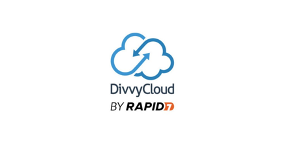IaaS Optimisation Market Guide
Overview
This Market Guide provides an overview of vendors and products in the ever-growing IaaS Cloud Management space. The purpose is to provide you with a long-list of vendors to consider if you are in the market for such a toolset. It is non-exhaustive and is based on original research from The ITAM Review.
Inclusion on the list does not mean endorsement, and no vendor has received special treatment or priority for their listing. This Market Guide is a free community resource and vendors did not pay for a listing. If you are a vendor not included in the list, get in touch and we will be happy to include you in a future edition.
If you are a user of one of the featured tools, please consider submitting a review using the green “Submit Review” button at the top-right of the page. Reviews can be published anonymously but will be verified by members of the ITAM Review for authenticity.
All logos used below are trademarks of the companies listed and are used without express permission. Should a trademark holder wish that their logo is removed they should contact the author.
Market Definition and Analysis
The market being analysed is the IaaS (Infrastructure as a Service) Cloud Management market, which is focused on providing organisations with tools to discover, manage, and optimise their IaaS (aka Public Cloud) environments and expenditure.
Key Findings
This market is evolving quickly. Functionality varies from simple discovery of spend through to automation of management tasks and advanced optimisation capabilities. Many tools appear to offer similar functionality and no tool has a clear lead; you may find that a single tool will not provide all the functionality your organisation requires.
Recommendations
Vendor Maturity
Many vendors are new entrants in this market, particularly in comparison to the traditional on-premises SAM tool vendors. The long-term viability of vendors should certainly be considered when selecting a tool.
Inclusion Criteria
We have attempted to include vendors from across the spectrum of size, geography, and product capability. If you know of a tool not listed, please contact the author for inclusion in a future edition of the guide.
IaaS Cloud Management tool requirements
These will vary across organisations and even different business units within the same company, but typical requirements for a public cloud management tool include:
- Work across multiple clouds i.e. Azure, AWS, Google
- Overview of total spend, spend per vendor, spend per subscription, spend per cost centre
- Ability to discover and group cloud resources
- Reports/Dashboards for consumption by stakeholders
- Ability to match forecast spend against budget
- Ability to identify over-allocated resources
- Ability to provide “right-sizing” recommendations
Vendors
This section provides an overview of IaaS Cloud management vendors with a brief outline of their capabilities.
Apptio
Founded: 2007
HQ: Washington, USA
Apptio’s Cloud Cost Management gives a single view across environments and links cloud utilisation data with a company’s general ledger to reach a view of TCO (Total Cost of Ownership). It automates the ingestion of Amazon AWS and Microsoft Azure billing and, when modelling cloud migration costs, includes things such as security and labour to give an overall figure.
The ability to tag resources, suggest and monitor Reserved Instances (for AWS), and identify under-utilised resources are all available too.
Key Differentiator: Apptio have a wide ranging financially focused product portfolio.
Website – https://www.apptio.com/
 BMC TrueSight Cloud Cost Control
BMC TrueSight Cloud Cost Control
Founded: 1980
HQ: Houston, Texas
BMC are a titan of the software industry with over 20,000 customers across their range of IT solutions. Their IaaS solution, BMC Truesight, gives visibility of infrastructure costs across multiple cloud vendors including Amazon AWS, Microsoft Azure, Google Cloud Platform, and on-premises deployments.
It allows organisations to forecast costs over a 12-month period, alert stakeholders of when over-spending is imminent, and gives the ability to identify (and deal with) over-provisioned and unused resources. Additionally, TrueSight suggests where Reserved Instances could reduce spend on virtual machines.
Key differentiator: Aggregated view of costs across on-premises and cloud providers.
Website – https://www.bmc.com/it-solutions/cloud-cost-control.html
Certero
Founded: 2007
HQ: Warrington, England
Certero Cloud Asset Manager gives a view of spend across IaaS portals enabling organisations to identify total cloud spend and generate an overall picture of resources across cloud providers, as well as on-premises infrastructure. It can help identify duplicate subscriptions, automate certain tasks, and helps with managing SaaS contracts.
Key differentiator: A focus on potential licensing issues when migrating existing on-premises solutions into the cloud.
Website – https://www.certero.com/solutions/cloud-asset-management/
Cisco CloudCenter (formerly Cliqr)
Founded: 1984 / 2010
HQ: San Francisco
Cisco are predominantly thought of as a networking hardware vendor but, as that industry has become ever more “software defined” over the years, they are perhaps now more of a software company. They acquired Cliqr in April 2016 and the technology became Cisco CloudCenter.
Cisco CloudCenter works across multiple cloud environments including Amazon AWS, Microsoft Azure, Alibaba, Google Cloud Platform, and IBM as well as on-premises private cloud too. There is a heavy focus on automation and working across multiple clouds, as well as integration with service catalogues. Cisco CloudCenter enables organisations to set usage and cost limits against users, teams, and applications among other criteria.
Key differentiator: Application abstraction allows for easy use of multiple cloud providers.
Website – https://www.cisco.com/c/en/us/products/cloud-systems-management/cloudcenter/index.html
Cloudability
Founded: 2011
HQ: Portland, USA
Cloudability “True Cost Cloud Management Platform” supports Amazon AWS, Microsoft Azure, and Google Cloud Platform and gives a view into costs across these providers. It enables organisations to track cloud spend against budget, gives Reserved Instance & rightsizing recommendations, allows automation of tasks and uses machine learning to identify “Cryptojacking” – the secret use of your cloud environment to mine bitcoins and other cryptocurrency.
Key differentiator: Public APIs allow business to embed and use the data within internal applications and to integrate with a range of 3rd party tools and systems.
Website – https://www.cloudability.com/

CloudAware
Founded: 2013
HQ: New York, USA
CloudAware works across Amazon AWS, Microsoft Azure, and Google Cloud Platform and offers a range of features including Cost Management, Change Management, CMDB and more.
For cost management, it includes over 100 policies that can be used to identify and eliminate cloud waste, such as unattached EBS drives in Amazon AWS. Change Management provides policies to detect security risks such as unmonitored servers and publicly accessible Amazon S3 buckets as well as asset management issues such as missing tags on resources. Changes and approvals are recorded in a way compliant with PCI, HIPAA, and FISMA.
Key differentiator: It is built on force.com, the same platform as Salesforce, which enables powerful report creation.
Website – https://www.cloudaware.com/
CloudCheckr
Founded: 2011
HQ: New York, USA
CloudCheckr works across Amazon AWS, Microsoft Azure, and Google Cloud Platform and provides comprehensive cost management features including Reserved Instance management, identification of idle resources, predictive spend optimisation, and scheduled billing and chargeback capabilities.
It has a very strong security element including 100s of pre-built best practice checks, user permission tracking, cloud perimeter assessment and compliance features for 35 separate regulations including HIPAA and PCI DSS.
CloudCheckr simplifies cloud infrastructures for public cloud users. Its analytics and proprietary best practices ensure that users optimize their deployments.
Key differentiator: A real focus on cloud security
Website – https://cloudcheckr.com
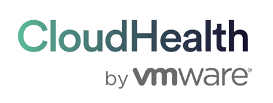
CloudHealth Technologies (now part of VMware)
Founded: 2012
HQ: Boston, USA
Acquired by VMware in August 2018, CloudHealth Technologies work across Amazon AWS, Microsoft Azure, and Google Cloud Platform with features across a wide spectrum of IaaS management including Cost Management, Automation, Security, Resource Utilisation and more.
The tool identifies under-utilised infrastructure such as over-provisioned virtual machines, and “zombie” resources such as unattached storage that are no longer performing a function – but still incur costs. It can be used to alert stakeholders when budgets are being exceeded and enables internal chargeback of cloud resources.
Organisations can track resource utilisation against individual users and can apply policies to set limits on what they can provision without approval. Automation capabilities include building approval workflows for creating/modifying certain cloud resources and automated removal of unused resources.
When it comes to security, CloudHealth Technologies can identify a range of risks including mis-configured users, accounts without Multi-Factor Authentication (MFA), suspicious resource provisioning, changes to root access and many more.
Key Differentiator: VMware’s large on-premises virtualisation market share could make this the “go-to” IaaS management technology for many organisations.
Website – https://www.cloudhealthtech.com/
 DataDog
DataDog
Founded: 2010
HQ: New York, USA
Datadog is focused much more on the “technical” side of cloud management, rather than cost management. It brings together metrics and events from servers, databases, applications, tools and services to present a unified view of the infrastructure.
It looks at tracking app performance, alerts on errors and latency, and analysing logs to identify areas of improvement.
Key differentiator: Aimed primarily at DevOps teams
Website – https://www.datadoghq.com/

Densify
Founded: 1999
HQ: Ontario, Canada
Densify works across Amazon AWS, Microsoft Azure, Google Cloud Platform, and IBM Cloud – as well as on-premises infrastructure.
The tool uses Cloe – the Cloud Learning Optimization Engine – to analyse IaaS utilisation and billing to make recommendations around virtual machine size, type, and placement, in an effort to keep public cloud costs down. Densify’s “right-sizing “efforts extend to on-premises environments, potentially helping to reduce license costs.
Key differentiator: The tool is hosted, maintained, and managed by Densify (including an assigned “Densification Advisor”) – meaning no implementation or training for customers.
Website – https://www.densify.com/
DivvyCloud
Founded: 2013
HQ: Arlington, USA
Working across Amazon AWS, Microsoft Azure, Google Cloud Platform, AliBaba, and other platforms, DivvyCloud addresses security concerns, regulatory compliance, and cost management.
The tool enables organisations to close non-compliant ports, enforce password and access policies, check for public access to Amazon S3 buckets and more. Standardised tagging across all resources plus the ability to schedule shut down/start up, and automatic right-sizing, of resources helps asset managers keep costs under control. The ability to ensure encryption and data retention policies are met can be used to maintain regulatory compliance, such as HIPAA, PCI, CIS, and GDPR, in the public cloud.
Key differentiator: Limit resources to approved cloud regions only, to ensure data sovereignty requirements are met.
Website – https://divvycloud.com/
IBM Cloud Brokerage (formerly Gravitant CloudMatrix)
Founded: 1911/ 2004
HQ: New York / Austin, USA
The snappily titled “IBM Cloud Brokerage Managed Services – Cost and Asset Management” helps organisations reduce over-provisioned resources, standardise tagging across cloud assets, and easily identify cost trends across hybrid environments.
Key differentiator: Part of a larger suite of Cloud Brokerage managed services.
Website – https://www.ibm.com/us-en/marketplace/cloud-brokerage-cam
Jamcracker
Founded: 1999
HQ: San Francisco
Jamcracker manages Amazon AWS, Microsoft Azure, Google Cloud Platform, and IBM Cloud as well as on-premises solutions. Budgeting and cost management features include the ability to generate show-back reports and chargeback statements, financial system integration, and budget management. The tool provides information on resource utilisation and IaaS inventory with customisable widgets and dashboards for information sharing.
Key differentiator: Built to facilitate integration and extensibility with 3rd party applications.
Website – https://www.jamcracker.com/
Metricly
Founded: 2002
HQ: Virginia, USA
Metricly is focused solely on Amazon AWS and provides cost management and/or resource monitoring including predicted costs, finding under-utilised resources, OS and Middleware data and more.
Key differentiator: Ability to run “what-if” scenarios.
Website – https://www.metricly.com/
Microsoft Azure Cost Management (formerly Cloudyn)
Founded: 1975 / 2012
HQ: Redmond, USA / Tel Aviv, Israel
Acquired by Microsoft in June 2017, Cloudyn became Microsoft Azure Cost Management (ACM). The tool enables resource tagging, budget alerts, the ability to reduce cloud waste through idle and over-provisioned resources, and chargeback capabilities.
For Azure users, some features are free while others carry an additional cost (from December 2018). For Amazon and Google users, all features are priced at 1% of managed cloud spend per vendor.
Key differentiator: Available directly within the portal of Microsoft Azure.
Website – https://azure.microsoft.com/en-us/services/cost-management/
ParkMyCloud
Founded: 2015
HQ: Virginia, USA
Working across Amazon AWS, Microsoft Azure, Google Cloud Platform, and AliBaba Cloud, ParkMyCloud enables organisations to see all their IaaS resources in one place and easily schedule servers to shut down when not needed. The tool can recommend instances to be “parked” based on their tags (such as “test”, “dev” etc.) and used utilisation patterns.
User management allows role-based access to cloud resources, such as giving Finance access to spend and forecast reports.
Key differentiator: Ability to control resources via Slack/Microsoft Teams bots
Website – https://www.parkmycloud.com/
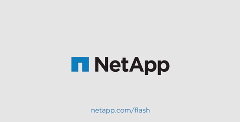
NetApp Qstack (formerly GreenQloud)
Founded: 1992 / 2010
HQ: California, USA / Reykjavik, Iceland
Acquired by NetApp in August 2017 (although it is still pending), GreenQloud Qstack gives organisations a single place from which to monitor their datacentre infrastructure, across Amazon AWS and Microsoft Azure, as well as on-premises environments.
A strong focus on application orchestration and containers makes this a very DevOps focused offering, with many features aimed to improve deploying/managing microservices for example.
Built-in chargeback metering and the ability to place resources in different clouds depending on cost will be of interest to asset managers.
Key differentiator: Being part of NetApp puts it in an interesting place.
Website – https://www.qstack.com/
RightScale
Founded: 2006
HQ: California, USA
RightScale have two products – “Optima” for cloud cost management, and “Cloud Management Platform” for orchestration.
RightScale Optima consolidates costs between public and private clouds and allows organisations to break this down by factors including teams, and individual applications. Asset tags can be used to chargeback and showback for internal cost distribution.
Terminating unused resources, predicting future costs, and comparing different cloud providers can all be done within the tool too.
Key differentiator: Separate products for cost management and full platform management.
Website – https://www.rightscale.com/

ServiceNow
Founded: 2004
HQ: San Francisco, USA
ServiceNow, well known for their service management platform, now have a focus on what they call ITOM – IT Operations Management.
This includes a single repository of all IT infrastructure across on-premises and cloud with the ability to automate processes and manual tasks as well as helping to reduce software costs through scheduling resource downtime and managing against budgets.
Key differentiator: Claim their search functionality means asset tags are no longer required.
Website – https://www.servicenow.com/
Skeddly (by Eleven41 Software)
Founded: 2011
HQ: Toronto , Canada
Focused solely on Amazon AWS, Skeddly cost optimization is focused primarily around shutting down resources during certain times and identifying and deleting unused resources. It also includes the ability to schedule many common tasks across the range of AWS services.
Key differentiator: Claims to have been the first automated scheduling service for Amazon AWS.
Website – https://www.skeddly.com/
SoftwareOne PyraCloud
Founded: 1985
HQ: Stans, Switzerland
PyraCloud from SoftwareOne, a leading global software reseller, focuses mainly around cost management of cloud resources. As well as the Amazon AWS and Microsoft Azure IaaS platforms, the tool also manages Office 365 and Adobe Creative Cloud SaaS products.
Features include consistent asset tagging across Azure & AWS, budgeting and chargeback for business units and cost centres, and alerts based on budget consumption.
Key differentiator: Enables management of software agreements, and also purchasing for SoftwareOne customers.
Website – https://www.softwareone.com/en/our-offerings/pyracloud
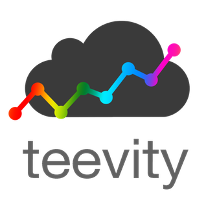
Teevity
Founded: 2012
HQ: Toulouse, France
Teevity helps organisations discover and track cloud resources across Amazon AWS, Microsoft Azure, and Google Cloud Platform and enables the chargeback of costs across user defined cost centres. The tool also identifies unused and over-provisioned resources, as well as the ability to compare costs across cloud providers.
Key differentiator: The tool allows for significant customisation to fit individual business requirements
Website – https://www.teevity.com/

Turbonomic
Founded: 2008
HQ: Boston, USA
Turbonomic helps accelerate on-premises to cloud migrations by looking at the on-premises situation and mapping that into an efficient, costs effective cloud solution. Working across cloud platforms including Amazon AWS, Microsoft Azure and IBM Softlayer as well as various on-premises options, the tool has wide compatibility.
Automatic resource sizing and placing, unused resource suspension, and Reserved Instance optimisation can all help ITAM professionals understand and manage costs, but its primary focus is optimization of performance.
Key differentiator: Installed on local servers rather than as a hosted service
Website – https://turbonomic.com/

Unify Cloud
Founded: 2009
HQ: Seattle, USA
UnifyCloud are a Microsoft partner who focus on Azure and Office 365.
They help streamline getting organisations into the cloud through build and migration services. Their primary focus appears to be around migrating infrastructure into Microsoft Azure and ensuring security compliance and reducing costs through efficient use of resources.
Key differentiator: A fully managed service for managing Microsoft Azure.
Website – https://www.unifycloud.com/
Yotascale
Founded: 2015
HQ: California, USA
Yotascale focuses on anomaly detection, continuous optimisation, and contextual analytics in the Amazon AWS cloud.
The tool can help identify cost jumps, the cause/s, and the resource owners – typically in a matter of minutes. It will identify under-utilised resources and suggest where long running instances could be switched to Reserved Instances to reduce costs. The analytics give an overall view of AWS spend and allow for costs to be divided based on categories such as region, owner, or application.
Key differentiator: DevOps tool with a sole Amazon AWS focus
Website – https://www.yotascale.com/


 BMC TrueSight Cloud Cost Control
BMC TrueSight Cloud Cost Control
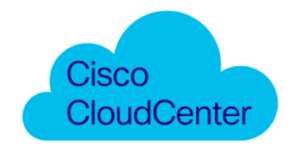
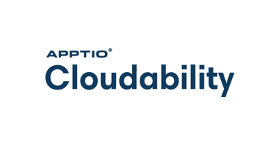

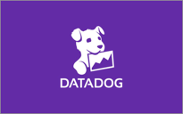 DataDog
DataDog